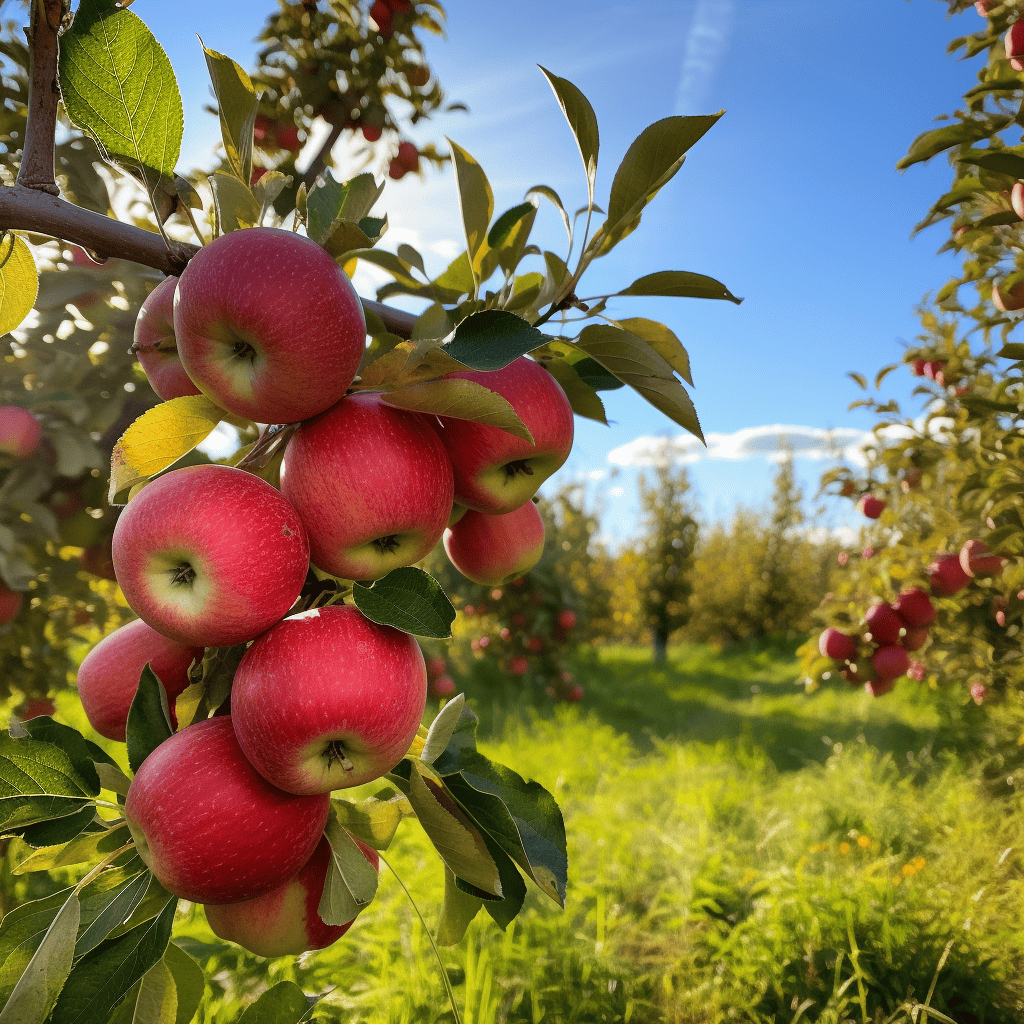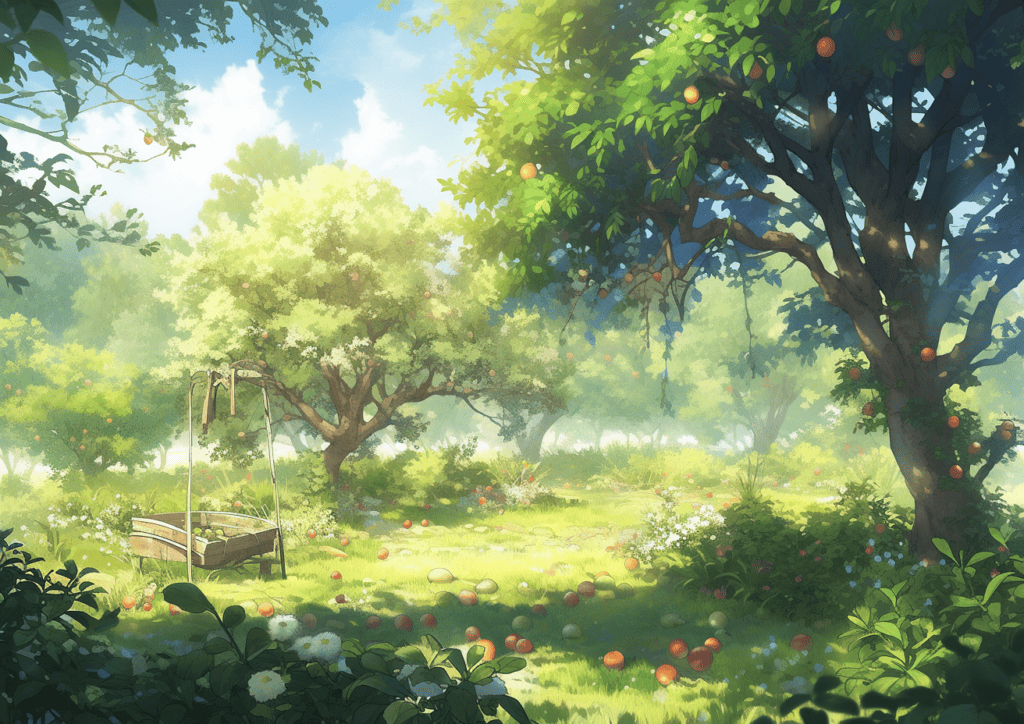Successful Apple Tree Guilds around the World
In order to truly grasp the potential of apple tree guilds in transforming agricultural practices, it is essential to examine successful case studies from various regions around the world. These examples demonstrate how the principles of permaculture and the careful selection of companion plants can create thriving and resilient ecosystems centered around apple trees.
One notable case comes from a permaculture farm in Oregon, where a diverse apple tree guild has been established. The central element of this guild is a dwarf fruit tree variety, carefully chosen for its compact size and high fruit production.
Under-plantings include a combination of nitrogen-fixing plants such as comfrey and dynamic accumulators like borage, which improve soil health by drawing up essential nutrients from deeper layers. This superguild not only enhances fruit production but also contributes to pest control as certain plants repel pests naturally.
Moving across continents to New Zealand, another remarkable example can be found on an organic orchard practicing permaculture principles. Here, apple tree guilds have been carefully designed to create highly interconnected ecosystems.
The mulch layer composed of wood chips helps retain moisture while also providing habitat for beneficial insects that control pests. Nitrogen-fixing plants like clover are strategically positioned within the guild to improve soil fertility, ensuring healthy growth and abundant yields.
Heading over to Europe, we find an inspiring case in Sweden where disease-resistant apple varieties have been combined with specific under-plantings in an effort to reduce chemical inputs. This innovative approach involves incorporating medicinal herbs such as chamomile and thyme into the guild systemically.
These plants not only repel pests but also possess natural antifungal properties that help maintain the health of both the apple trees and surrounding vegetation. These case studies demonstrate that successful apple tree guilds are built upon careful consideration of plant selection and their interrelationships within the ecosystem.
By harnessing nature’s inherent wisdom and embracing permaculture principles, farmers and gardeners around the world can create thriving and resilient apple tree guilds that not only enhance fruit production but also contribute to the overall health of the land. Through these examples, it becomes evident that incorporating diverse companion plants in a harmonious design can lead to sustainable agriculture practices and a more regenerative future.
Future Trends in Apple Tree Guild and Permaculture Farming
As the world increasingly recognizes the importance of sustainable agriculture, the future of apple tree guilds and permaculture farming appears promising.
With the aim of creating resilient and diverse ecosystems, these practices are expected to gain further momentum in the coming years. Several key trends can be identified that will shape the development and application of apple tree guilds.
One prominent trend is the emphasis on maximizing yields through high-yield gardens. Traditional monoculture practices have often focused solely on maximizing productivity, but permaculture farming with apple tree guilds takes a different approach.
By incorporating a variety of companion plants within an apple tree guild, farmers can create a highly diverse system that not only produces abundant fruit but also supports biodiversity and ecological balance. This shift towards holistic and regenerative approaches aligns with growing consumer demand for environmentally friendly food production.
Furthermore, future trends indicate a greater focus on improving soil health through effective companion planting techniques. The central element in any apple tree guild is to enhance the soil’s fertility and structure by harnessing the symbiotic relationships between plants.
For instance, nitrogen-fixing plants like legumes can help replenish nitrogen levels in the soil, benefiting not only the apple trees but also other under-plantings within the guild. Additionally, dynamic accumulators such as comfrey contribute essential nutrients to compost soils while acting as nutrient pumps for fruit trees.
Another significant trend is the exploration of innovative ways to manage pests sustainably within apple tree guilds. Instead of relying on chemical interventions that harm beneficial insects along with pests, permaculture techniques promote natural pest control mechanisms.
By carefully selecting companion plants that repel pests or attract beneficial insects, farmers can create a balanced ecosystem where pest populations are regulated naturally without compromising crop productivity or quality. As agricultural practices evolve towards sustainability and resilience, apple tree guilds and permaculture farming hold great promise.
Future trends in this field encompass maximizing yields through high-yield gardens, enhancing soil health through effective companion planting, and implementing sustainable pest management techniques. By embracing these trends, farmers can not only improve their own livelihoods but also contribute to the conservation of biodiversity and the creation of healthier ecosystems.
Conclusion: The Power of Apple Tree Guilds in Transforming Agriculture
Apple tree guilds represent a remarkable permaculture technique that has the potential to revolutionize sustainable agriculture. By incorporating mulch, beneficial plants, and various under-plantings around a central fruit tree, apple tree guilds create interconnected ecosystems that enhance biodiversity, soil health, and fruit production.
These guilds attract beneficial insects, improve nutrient cycling, and provide habitat for wildlife. The careful selection of companion plants ensures that the needs of the apple tree are met throughout its life cycle while also maximizing the overall productivity of the system.
One of the key advantages of apple tree guilds lies in their ability to create a self-sustaining ecosystem where each component plays a crucial role. The nitrogen-fixing plants within the guild provide essential nutrients to support healthy growth and fruit production for the apple trees.
Meanwhile, other herbs and groundcovers serve as living mulch, helping to retain moisture in the soil and suppress weed growth. This symbiotic relationship between different plants within an apple tree guild maximizes resource utilization and improves overall ecosystem resilience.
Moreover, through careful design and maintenance practices, it is possible to create superguilds by combining multiple fruit tree guilds together. These interconnected systems magnify the benefits associated with individual guilds by further enhancing biodiversity and ecological functions.
This style of growing not only cultivates abundant harvests but also contributes to regenerative agriculture by restoring degraded land into thriving ecosystems. Apple tree guilds offer an innovative approach towards transforming agriculture into a more sustainable and resilient practice.
By harnessing permaculture principles such as plant diversity, nutrient cycling, and ecological interactions within these guild systems, we can achieve not only fruitful harvests but also healthier soils and thriving ecosystems. With their potential to increase biodiversity while reducing reliance on synthetic inputs like pesticides or herbicides, apple tree guilds represent a promising path towards a future where farming and nature coexist harmoniously, leaving a positive impact on both human and environmental well-being.



